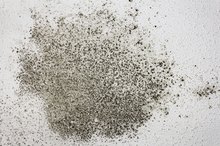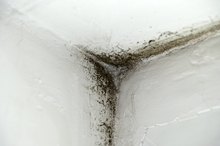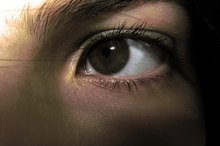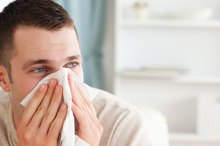What does fact checked mean?
At Healthfully, we strive to deliver objective content that is accurate and up-to-date. Our team periodically reviews articles in order to ensure content quality. The sources cited below consist of evidence from peer-reviewed journals, prominent medical organizations, academic associations, and government data.
The information contained on this site is for informational purposes only, and should not be used as a substitute for the advice of a professional health care provider. Please check with the appropriate physician regarding health questions and concerns. Although we strive to deliver accurate and up-to-date information, no guarantee to that effect is made.
Symptoms of Black Mold in Children
Black mold is a toxic fungus that grows in buildings and homes that have water problems, such as damage from flooding or an unknown leak. Black mold produces spores to reproduce, and these spores can cause health problems in people ranging from hay fever-like respiratory problems to skin rashes. The symptoms of black mold exposure are largely the same in children as in adults, although children can be at risk for more severe complications.
If you are experiencing serious medical symptoms, seek emergency treatment immediately.
Respiratory Problems
If your child inhales the spores from black mold, he may experience respiratory problems similar to those from seasonal allergies. This includes irritated eyes, a runny nose and sneezing. Your child may also experience throat irritation and a cough. If your child has asthma, black mold spores may trigger an attack or exacerbate an existing attack.
- If your child inhales the spores from black mold, he may experience respiratory problems similar to those from seasonal allergies.
Skin Irritation
Can Black Mold Cause Pneumonia?
Learn More
If your child's skin comes into contact with black mold spores, she may experience irritation and itching. Black mold has also been known to cause skin rashes, according to the Environmental Protection Agency 1.
Idiopathic Pulmonary Hemorrhage
Some research suggests that infants exposed to black mold may be susceptible to a serious lung condition called idiopathic pulmonary hemorrhage, or IPH. IPH is acute bleeding in the lungs that can quickly lead to respiratory distress. The Centers for Disease Control investigated clusters of this illness in the early 1990s in Cleveland and Chicago that appeared to occur in homes where there had been water damage and a proliferation of black mold. However, the CDC cautions that a firm association was never proved and further study is needed to confirm the link between IPH and black mold.
- Some research suggests that infants exposed to black mold may be susceptible to a serious lung condition called idiopathic pulmonary hemorrhage, or IPH.
- The Centers for Disease Control investigated clusters of this illness in the early 1990s in Cleveland and Chicago that appeared to occur in homes where there had been water damage and a proliferation of black mold.
Other Symptoms
Diseases Linked to Black Mold
Learn More
Since black mold acts like an allergen, different people can react in different ways. Other symptoms that may occur in children exposed to black mold include:
- headaches
- memory loss
- nosebleeds
- anemia
- nausea
- vomiting
Related Articles
References
- Environmental Protection Agency: A Brief Guide to Mold, Moisture and Your Home
- Centers for Disease Control and Prevention: Acute Idiopathic Pulmonary Hemorrhage Among Infants
- Florida Department of Health: What Health Problems can be Caused by mold?
- Allergy Relief Center: Mold Allergy Prevention and Control
- Amirhosein Ghaffarianhoseini, Husam AlWaer, Hossein Omrany, Ali Ghaffarianhoseini, Chaham Alalouch, Derek Clements-Croome & John Tookey (2018) Sick building syndrome: are we doing enough?. Architectural Science Review,61:3, 99-121.
- American College of Allergy, Asthma & Immunology. Mold Allergy. Reviewed April 23, 2018.
- Centers for Disease Control and Prevention. Fungal Diseases. Reviewed May 6, 2019.
- Centers for Disease Control and Prevention. Mold. Basic Facts. Reviewed December 20, 2017
- Asthma and Allergy Foundation of America. Mold Allergy. Reviewed October 2015.
- Centers for Disease Control and Prevention. Molds in the Environment. Rreviewed December 20, 2017.
- Asthma and Allergy Foundation of America, Mold Allergy
- Centers for Disease Control and Prevention (CDC), Mold, Basic Facts
- Rudert A, Portnoy J.Mold allergy: is it real and what do we do about it?Expert Rev Clin Immunol. 2017 Aug;13(8):823-835. doi: 10.1080/1744666X.2017.1324298. Epub 2017 May 17.
Writer Bio
Matt Olberding has been a professional journalist for nearly 20 years. His career has included stints as a copy editor, page designer, reporter, line editor and managing editor at newspapers ranging from community newspapers to major metros. Olberding has been a business writer and editor for a decade.







